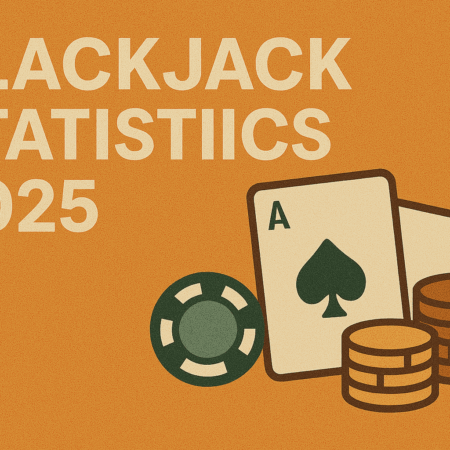Blockchain technology has come a long way since Bitcoin introduced Proof-of-Work (PoW) in 2009. But as the world pushes toward sustainability and scalability, a new form of consensus has taken center stage: Proof-of-Stake (PoS).
In this 2025 guide, we’ll break down what Proof-of-Stake is, how it compares to Proof-of-Work, the top PoS blockchains today, and what the future holds for this energy-efficient consensus mechanism.
What Is Proof-of-Stake?
Proof-of-Stake (PoS) is a consensus algorithm used by blockchains to validate transactions and create new blocks. Instead of requiring miners to solve complex mathematical puzzles (as in PoW), PoS relies on validators who are chosen based on the amount of cryptocurrency they have staked (locked up) in the network.
In other words, your economic skin in the game gives you a chance to verify transactions and earn rewards.
Key features of PoS:
- No energy-intensive mining
- Validators are rewarded with transaction fees and new coins
- Punishments (slashing) for dishonest behavior
Proof-of-Stake vs. Proof-of-Work
| Feature | Proof-of-Work (PoW) | Proof-of-Stake (PoS) |
| Validation Method | Solving cryptographic puzzles | Economic stake in network |
| Energy Usage | High | Low |
| Hardware Need | Specialized (ASICs, GPUs) | Minimal (regular computers) |
| Security Model | Cost of mining attack | Cost of stake lost (slashing) |
| Environmental Impact | Significant | Minimal |
Why PoS Is Gaining Ground
With growing concerns over the carbon footprint of crypto, PoS has become a favorable alternative. Ethereum’s historic shift from PoW to PoS in 2022 (known as The Merge) saved over 99% in energy consumption, setting the stage for mass PoS adoption.
Benefits of Proof-of-Stake
- Energy Efficiency
PoS consumes drastically less energy, making it environmentally sustainable. Validators no longer need massive mining rigs. - Scalability
PoS blockchains can handle more transactions per second (TPS), especially when combined with Layer 2 solutions or sharding. - Lower Barrier to Entry
Participants can become validators or join staking pools without needing expensive equipment. - Economic Security
Bad actors risk losing their staked assets (through slashing), which aligns incentives and enhances security. - Faster Finality
Some PoS chains offer near-instant transaction confirmations, improving user experience.
🔗 Top Proof-of-Stake Blockchains in 2025
Here are the most prominent PoS blockchains as of 2025, each with its own architecture and staking model:
🔹 Ethereum (ETH)
- Switched to PoS in 2022
- Uses “Casper” finality and slashing to enforce consensus
- Users can stake via solo nodes or platforms like Lido
🔹 Cardano (ADA)
- Uses Ouroboros, a provably secure PoS model
- Delegation-based: users assign their stake to pools
- Focus on academic rigor and sustainability
🔹 Solana (SOL)
- Hybrid PoS + Proof-of-History
- Ultra-fast block time (400ms)
- Validators must meet technical performance benchmarks
🔹 Avalanche (AVAX)
- Subnets allow customizable PoS networks
- Finality under 2 seconds
- Energy-efficient and scalable
🔹 Polkadot (DOT)
- Uses Nominated PoS (NPoS)
- Validators selected based on nominations by DOT holders
- Focused on multichain interoperability
🛠️ How to Stake Your Tokens
There are several ways to stake, depending on the blockchain and your tech comfort level:
1. Solo Validator
- You run a full node and meet minimum staking requirements (e.g., 32 ETH for Ethereum).
- Requires technical setup and constant uptime.
2. Delegated Staking
- You delegate your tokens to a validator or pool.
- Common in Cardano, Cosmos, and Tezos.
3. Liquid Staking
- Stake your tokens while still having access to liquidity via derivative tokens (e.g., stETH for ETH).
- Offered by platforms like Lido or RocketPool.
4. Centralized Staking
- Offered by exchanges like Coinbase, Kraken, and Binance.
- Easiest method, but comes with custodial risk.
Risks of Proof-of-Stake
While PoS is a powerful innovation, it’s not without drawbacks:
Slashing
Misbehaving or offline validators may lose part of their staked funds.
Centralization Risk
If a few validators control a large portion of the stake, the system can become centralized.
Illiquidity
Staked funds may be locked or require an unbonding period before withdrawal.
Smart Contract Risk
When staking through DeFi protocols or liquid staking platforms, bugs or exploits may put your funds at risk.
The Future of PoS in Blockchain (2025 & Beyond)
Proof-of-Stake has already reshaped how we think about consensus. In 2025, expect to see:
- Hybrid Consensus Models: Combining PoS with technologies like zk-proofs or DAGs
- Modular Chains: Chains like Celestia use PoS for consensus but separate execution
- Sovereign Rollups: PoS chains powering optimistic or ZK rollups for fast scaling
- Regulatory Focus: As staking becomes financialized, expect clearer KYC and tax rules
PoS is more than an energy-saving mechanism—it’s the foundation of scalable, user-friendly blockchain ecosystems going forward.
FAQ: Proof-of-Stake (PoS)
Is Proof-of-Stake better than Proof-of-Work?
Not necessarily “better,” but PoS is more energy-efficient and scalable. PoW is still favored for simplicity and security in some cases (e.g., Bitcoin).
Can you lose money staking?
Yes, through slashing, if your validator behaves dishonestly or goes offline. There’s also smart contract and liquidity risk.
How much can I earn from staking in 2025?
Yields vary per chain. In 2025, ETH yields average 3–5% APR, while smaller chains may offer 10%+ but with higher risk.
Is staking the same as mining?
No. Mining (PoW) requires computational power. Staking (PoS) involves locking coins as collateral for network participation.
Can I stake crypto on a mobile device?
Yes, via custodial apps like Coinbase or non-custodial wallets like Trust Wallet and Ledger Live.
What is slashing in PoS?
Slashing is a penalty mechanism that takes a portion of your stake if a validator acts maliciously or negligently.
Which coins use Proof-of-Stake in 2025?
Popular PoS coins include Ethereum, Cardano, Solana, Polkadot, Avalanche, Near, and Cosmos.
Proof-of-Stake is the future of blockchain consensus—leaner, greener, and ready for global adoption. Whether you’re a developer, investor, or user, understanding PoS helps you participate more securely and profitably in the Web3 world.

 Canada
Canada Deutsch
Deutsch Español
Español Português
Português



